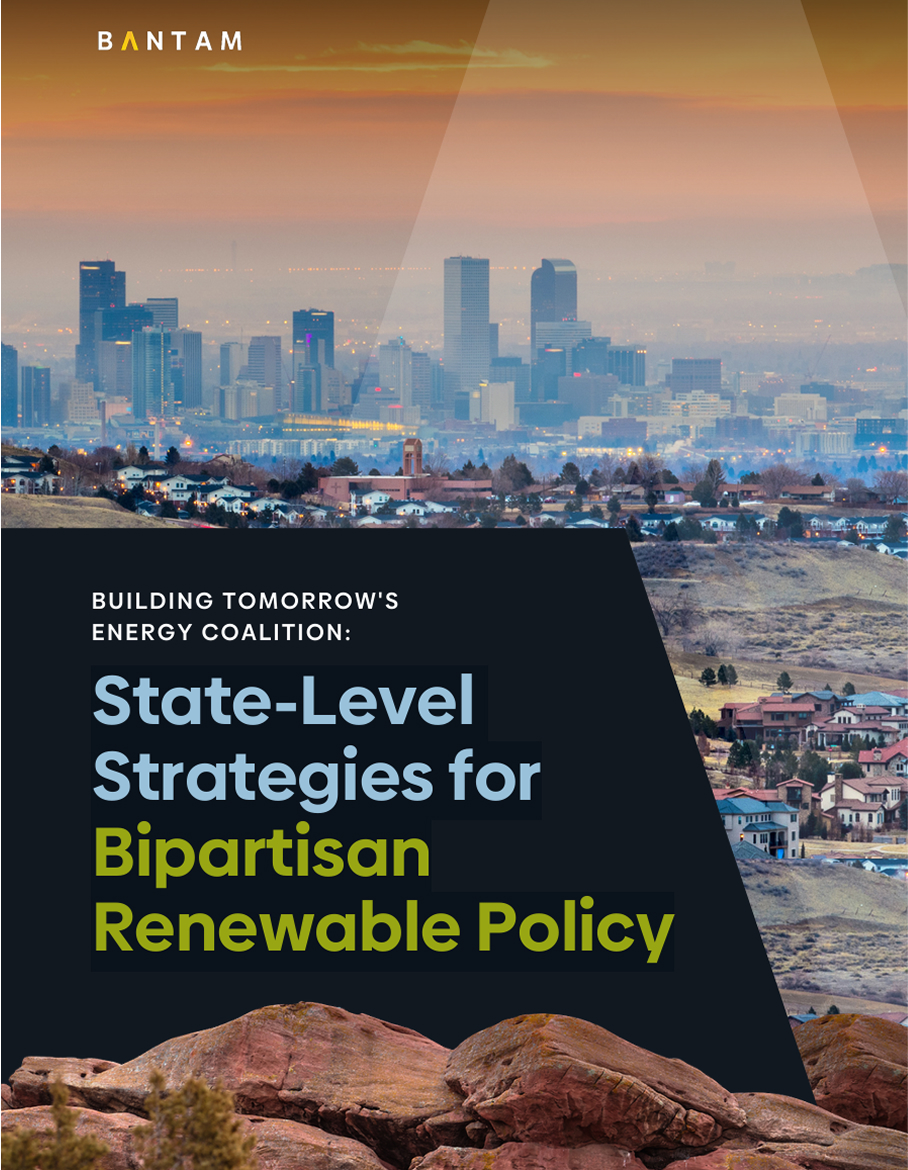- Why bipartisan coalitions are critical to advancing renewable policy in Republican-led or divided legislatures.
- How population decline and fiscal stress in rural counties can create common ground for Republicans and Democrats.
- The role of freshman legislators and leadership blocs in opening windows for policy breakthroughs.
- Case examples: why Missouri, Nebraska, and Wisconsin are uniquely positioned for bipartisan progress.
Learn about these results
Our analysis shows that, just as in local project communities, successful policy campaigns at the state level require authentic messengers, a compelling economic case, and coalition-building across unexpected allies—from farmers and small businesses to county commissioners and union leaders.
By combining data-driven analysis with grassroots and grasstops organizing, Bantam identifies where bipartisan coalitions are possible and how to navigate the politics to get renewable legislation over the finish line. The result is a replicable model for advancing state-level policies that expand renewable development and deliver tangible benefits to communities.



